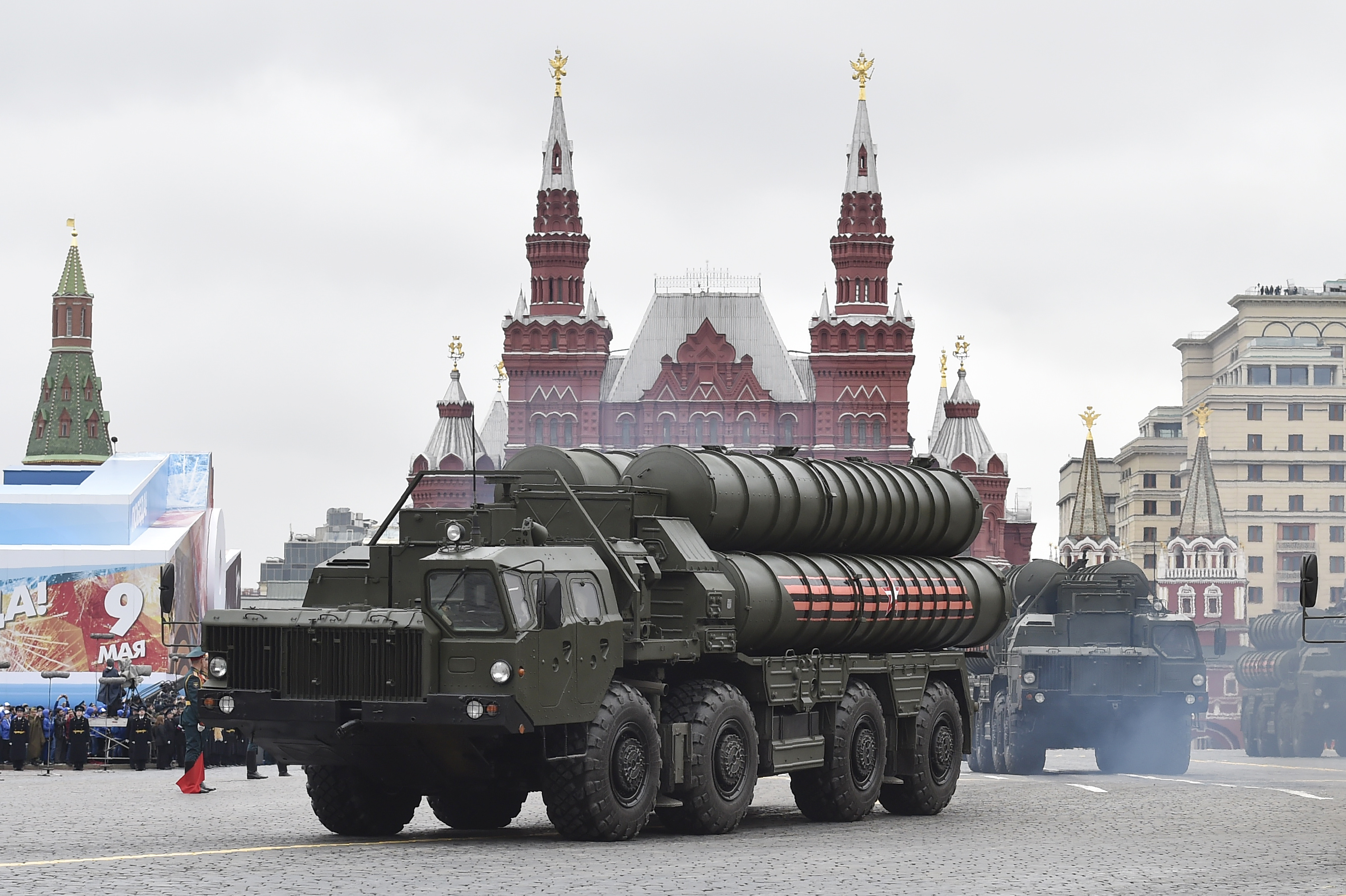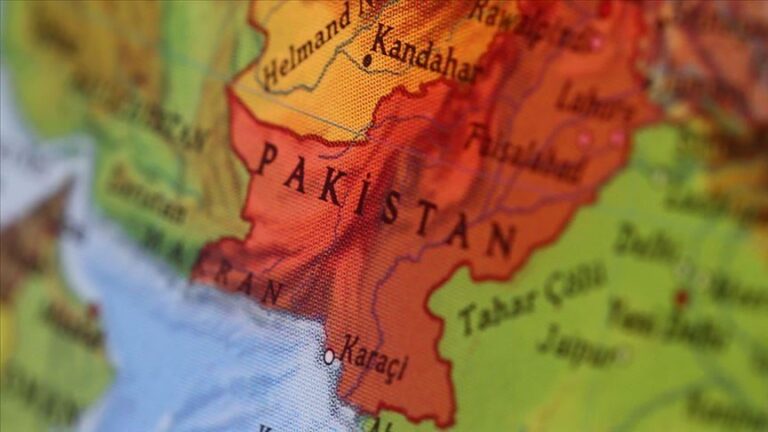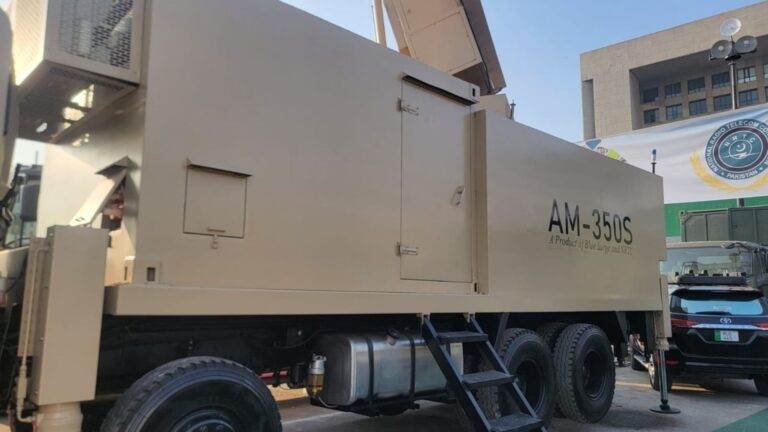
Source: AFP
Maimuna Ashraf
India’s pursuit of advanced military technologies has enabled it to secure its place among the world’s top importers of conventional weapons over the past two decades. India has also been investing in developing missile defenses for a Ballistic Missile Defence (BMD) shield coupled with an integrated, and multi-layered air defence network. After testing the Prithvi Air Defense (PAD) missile for high altitude interception in 2006 and Advanced Air Defense (AAD) missile for lower altitude interception in 2007, India and Russia concluded the much anticipated US $ 5.2 billion deal in October 2018 for the purchase of five regiments of Russian-made S-400 Triumf surface to air missile system.
S-400 is Russia’s most advanced, effective and mobile long-range air defence system, capable of intercepting cruise and ballistic missiles, stealth aircraft and drones at an engagement range of 400 km. Significantly, S-400 comprises an improved radar system capable of locating targets 600 km away, with the ability of engaging approx. 36 targets simultaneously. Its anti-ballistic missile capabilities enable it to intercept ballistic missiles travelling at the speed of 4800 meters per second, at a distance of 60 km.
India has signed the final commercial contract of S-400 with Russia at a time when Delhi-Washington bonhomie is on the rise and the latter has threatened to impose economic sanctions on countries engaged in significant military and intelligence transactions with Russian defense entities. It was speculated that the S-400 deal, originally approved in 2015, might be called off in view of the possibility that India’s decision could be treated under the recently announced US Congress legislation known as Countering America’s Adversaries Through Sanctions Act (CAATSA), aimed at punishing Russia for its alleged meddling in 2016 US presidential elections. However, the finalization of the S-400 deal not only laid all speculations of its possible demise to rest, but also signifies that India remains apprehensive of embedding itself completely under US orbit and is seeking a strategic balance between the major powers in order to achieve its goals of military modernization. India’s strategic defence cooperation is not restricted to Russia and the US, as Israel and France are also emerging as some of its largest weapon suppliers. The S-400 deal is followed by a $777 million agreement with Israel for the supply of Barak-8 Long Range Surface to Air Missile (LRSAM) defense system for seven ships of the Indian Navy.
Given Indian dependence on Russia for 60% of its weapons inventory, and the emerging strategic convergence of China and Pakistan with Russia is also fueling India’s regional strategic outlook. Similarly, given India’s centrality to the US-led Indo-Pacific strategy of containment of China, the US might look the other way and not want India to risk its national security matrix by endangering its partnership with Russia, on which India relies heavily to match China’s strategic capabilities that already include S-400. It remains to be seen whether the US eventually grants India a waiver to exempt it from CAATSA sanctions. The treatment of India under the scanner of CAATSA can potentially undermine the Indo-US strategic convergence and trust built over the past decade.
Increasingly, India is building an ambiguous mosaic of offensive and defensive weapons systems. It is actively developing an assured second-strike capability through submarine launched ballistic missiles (K-4 & K-15) and submarine launched cruise missiles. Moreover, India is testing ballistic missiles from canister-based launch systems and road-mobile launchers (as the Agni-V test) and shifting liquid solid fuel to solid fuel (as Agni-II and Prithvi-II) to improve its readiness level, deployment flexibility and survivability during a crisis. Similarly, the induction of short-range systems such as tactical/battlefield ballistic missiles (Prahaar & Pinaka) and the cruise missiles (such as BrahMos and Nirbhay) hint towards the development of counterforce strike capability. This trend of technological development and acquisition reflects a growing shift towards pre-emption which questions India’s stated No-First Use (NFU) and minimum deterrence posture. In this realm, the S-400 will further reinforce India’s strategic land and air-based deterrence in two ways: first, by reducing India’s vulnerability to Pakistan’s ballistic and cruise missiles and second, by increasing the vulnerability of Pakistan’s air force assets that can be tracked and targeted within Pakistan’s own airspace. The BrahMos-A already possesses the ability to strike deep within Pakistan. Resultantly, this will serve to undercut Pakistan’s offensive posture yet strengthen India’s offensive-defensive posture, making the S-400 a potent damage limitation platform for India.
Although the procurement and full operationalization of the S-400 will take another decade, India has yet to achieve the high level of accuracy and readiness to carry out a comprehensive first strike. Nevertheless, India’s current acquisition of such destabilizing missile systems generates two possibilities: first, India will have the flexibility of first-use under the guise of NFU policy; and second, the S-400 defense system can be employed to degrade Pakistan Air Force’s offensive and defensive capabilities by targeting PAF AWACS and Aerial Refueling Tankers and fighter aircraft within Pakistani air-space if India intents to launch a preemptive strike. The S-400 can also be potentially effective against sub-sonic cruise missiles like Babur and Raad. Interestingly, in response to US claims of Russia violating the Intermediate Nuclear Forces in Europe (INF) Treaty, Russia maintains that the US missile defence systems deployed in European/NATO countries can be converted into offensive missile platforms. Similarly, such long-range BMD and SAM systems as the S-400 serve a dual offense-defense purpose.
Pakistan will have to take immediate and remedial measures to counter the possible effects of this development. One way of addressing this challenge is to develop and deploy Multiple Independently Targetable Reentry Vehicle (MIRV)-equipped ballistic missiles such as the Ababeel and Maneuverable Reentry Vehicle (MARVs) warheads. This will increase the probability of penetrating India’s BMD defended targets and shall improve the effectiveness of Pakistan’s ballistic missiles. Similarly, supersonic versions of Babur and Raad cruise missiles will have to be developed which can be effective against such SAM systems. In addition, a robust and improved ISR capability can track the accurate location of mobile surface to air missile systems like the S-400 and enable real-time targeting through SEAD and DEAD (Suppression/Destruction of Enemy Air Defence) operations. Moreover, the induction of Fifth Generation Fighter Aircraft in the distant future can provide Pakistan the capability to penetrate a S-400 defended site. Eventually Pakistan will have to develop hypersonic cruise missiles and other standoff systems to maintain the credibility of its deterrent capability.
Therefore, India’s development and acquisition of multifaceted capabilities disturbs the fragile strategic balance in South Asia and will be perceived by Pakistan as part of a provocative strategy to achieve escalation dominance. Although missile defenses do not provide a full-spectrum and fool-proof protection but bear the potential to trigger a conflict due to the possessor’s false sense of security. The induction of missile defenses by India will inevitably exacerbate arms race instability and will only contribute to regional instability in South Asia.
Maimuna Ashraf is a Research Fellow at the Center for International Strategic Studies, Islamabad.







